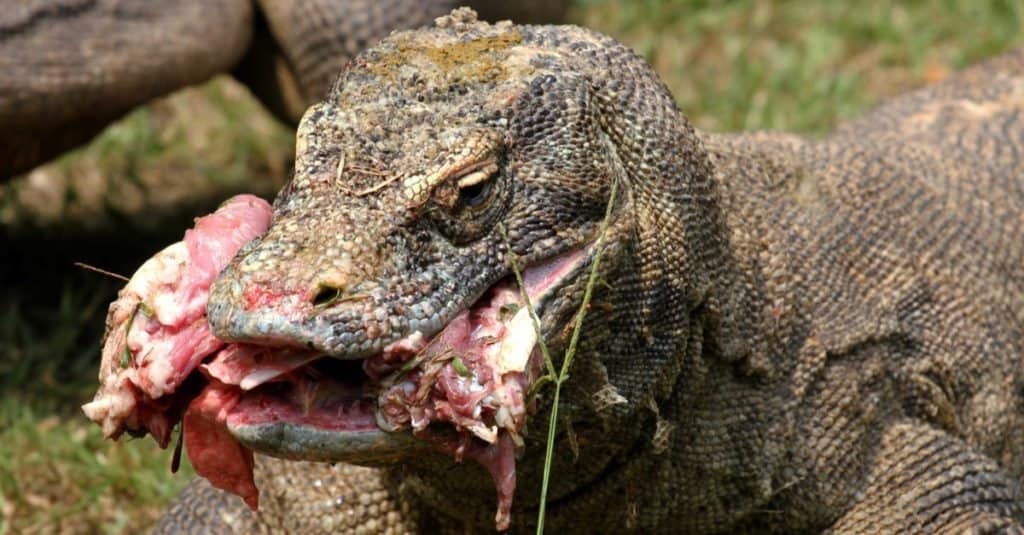Continue reading for our analysis...

In reality, komodo dragons are by far the biggest lizards on Earth. These lizards have a maximum length of ten feet, or around the width of a small automobile. They can weigh up to 154 pounds in general, but have been measured at over 300 pounds, which is about the same as a panda bear!
They live on the coastlines and meadows of the Indonesian archipelago’s central minor islands. Komodo dragons, which were not first characterized scientifically until 1912, are omnivorous predators that eat anything from deer and hogs to small birds and other lizards.
They can effortlessly transition between terrestrial, arboreal, and aquatic habitats thanks to their long bodies and strong limbs. Komodo dragons live alone and only assemble to reproduce and eat.
Being at the head of their food chain, komodo dragons are considered apex predators. Although it’s possible that people pose a threat to Komodo dragons, this is mainly due to habitat degradation than actual hunting.
Unique Eaters

Komodo dragons can grow to three meters in length. Even though they are so big, Komodo dragons can be very fast when they are hunting prey.
©Yudi S/Shutterstock.com
A video has been uploaded to YouTube showing just how effortlessly these creatures eat. They have unique hunting methods that make them even more of an enigma. About 88% of their prey, including the bones, hooves, hide, and intestines is consumed by Komodo dragons.
You definitely wouldn’t want to get bitten by a Komodo dragon as it is one of the most venomous reptiles on the earth. Venom pours into a wound through ducts between the teeth as the lizard bites into its victim.
Its venom contains toxins that can cause shock, hemorrhage, and coagulopathy. The dragon will follow its dying prey while waiting for the venom to finally kill it if the initial bite fails to kill the prey.
Fresh Stingray for Lunch
The video mentioned earlier, and posted below, shows a lone komodo dragon walking along the beach. It sways its head side-to-side to help distinguish if there is any prey nearby. Komodo dragons primarily use their sense of smell to locate food.
They collect airborne molecular samples with their long, forked tongues. They can learn anything from the potential location and distance of the prey. As we continue to watch the video, this large lizard continuously sticks its tongue out to help find food.
Eventually, it stumbles upon a beached stingray. After checking out the slimy animal, the Komodo dragon folds it in half and swallows it whole! One person commented, “Someone did a great job of cutting the barb off the stingray’s tail before the Komodo Dragon ate it.”
The original person who posted responded with, “It’s possible that this stingray belongs to a fisherman who fell from the boat and was stranded on the shore.” It’s not uncommon for fishermen to catch stingrays and cut off their barb before tossing them back into the water.
Thank you for reading! Have some feedback for us? Contact the AZ Animals editorial team.






